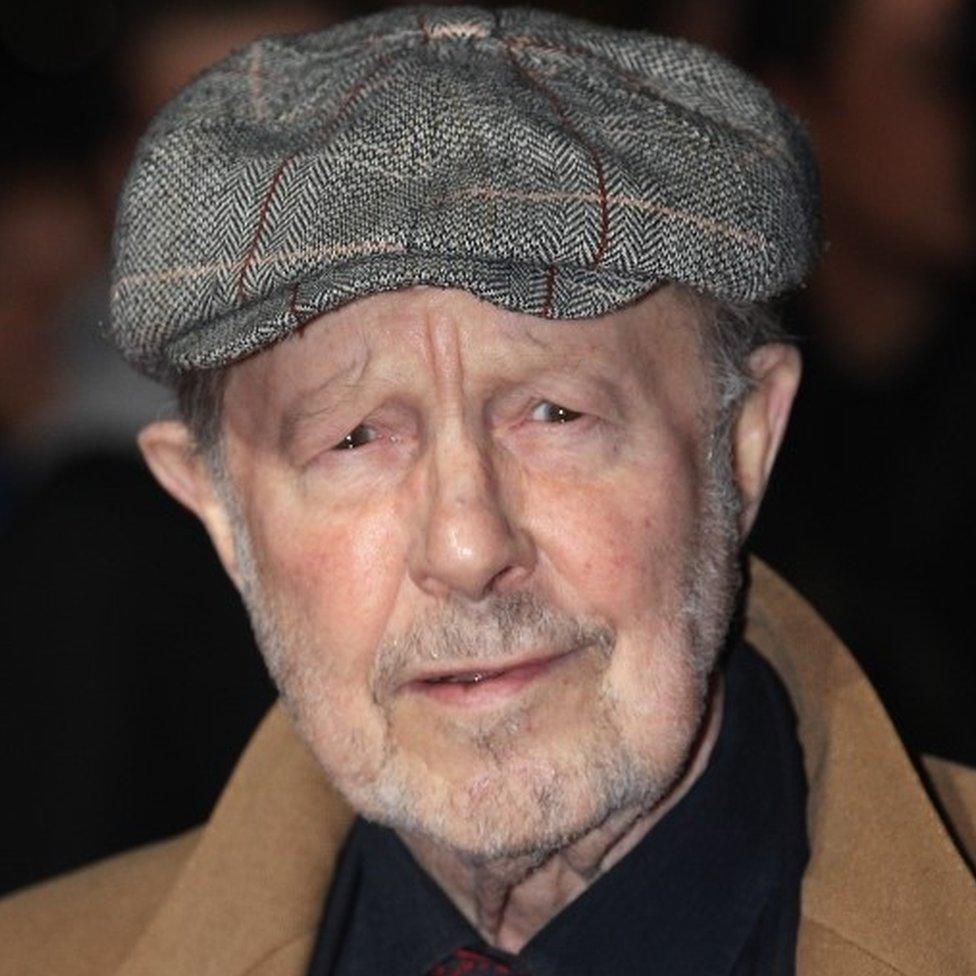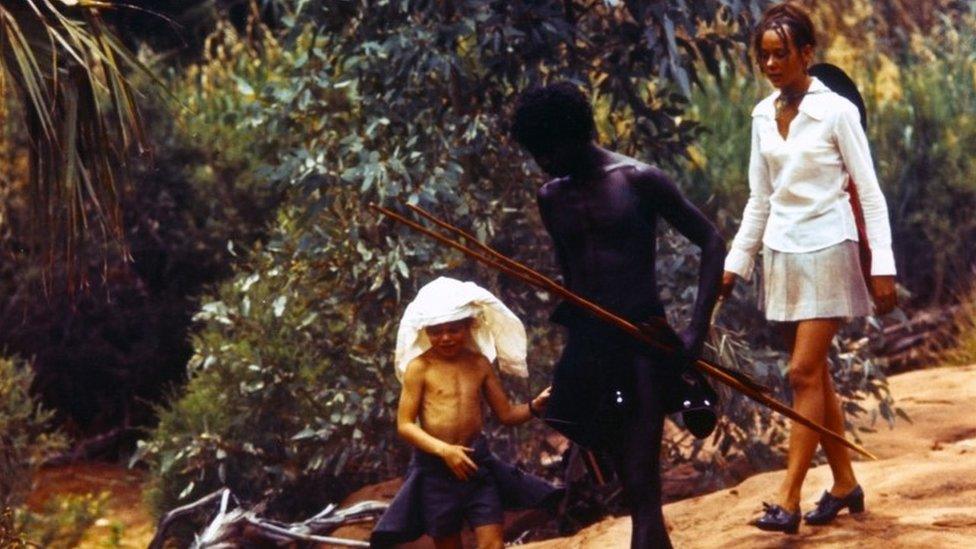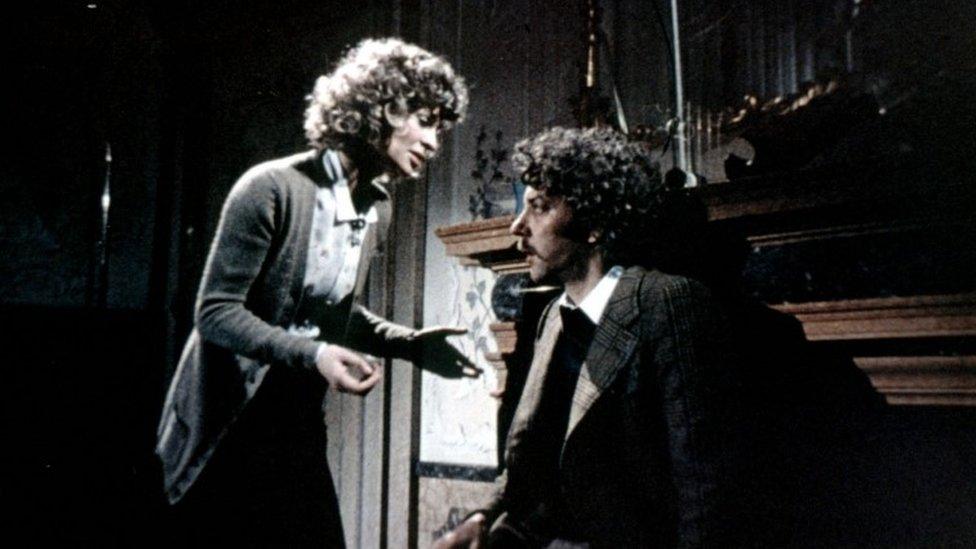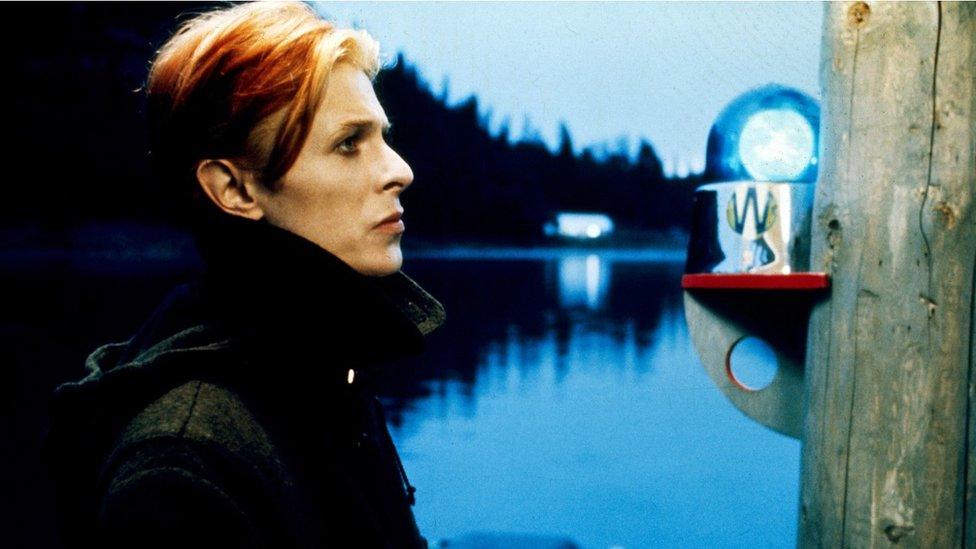Nicolas Roeg obituary: From tea-maker to director's chair
- Published

Nicolas Roeg was one of the most original film-makers the UK has ever produced.
His early experience as a cinematographer brought a stunning visual quality to his work.
He often exasperated the critics and gained a reputation as being hard on his actors.
And he took a delight in jumbling scenes and time to both bewitch and bewilder his audiences.
Nicolas Roeg was born in St John's Wood in north London on 15 August 1928. His father Jack, who was of Dutch ancestry, worked in the diamond trade but lost a lot of money when his investments failed in South Africa.
The first film he remembered seeing as a child was Babes in Toyland, starring Laurel and Hardy.
Roeg did his National Service after World War Two before getting a job making tea and operating the clapper board at Marylebone Studios, where he worked on a number of minor films.
By the dawn of the 1960s he had progressed to camera operator, notably on The Trials of Oscar Wilde and Fred Zinnemann's film The Sundowners.
He was part of the second unit on David Lean's Lawrence of Arabia. Lean later sacked him as director of photography on Doctor Zhivago after the two constantly quarrelled.
Many of the stunning scenes that won the latter film an Oscar were shot by Roeg but he was not credited.

The graphic scenes in Performance shocked the studio
His breakthrough came in 1964 when he worked as a cinematographer on Roger Corman's film The Masque of the Red Death, an adaptation of the Edgar Allan Poe short story, starring Vincent Price.
Corman was gaining a reputation for spotting and developing new talent and boosted the careers of other future directors including James Cameron and Martin Scorsese.
Interestingly the red-clad figure in the Corman film foreshadowed a similarly dressed character in Roeg's masterpiece, Don't Look Now.
He also worked on Francois Truffaut's Farenheit 451, which was notable for the bright hues in which it was shot, and on John Schlesinger's 1967 adaptation of the Thomas Hardy novel, Far From the Madding Crowd.
'Hallucinogenic intensity'
The latter film won him a Bafta nomination for his lush photography of rural Dorset, forming the background to the tale of love and betrayal in a 19th Century farming community.
His first foray into directing came in somewhat controversial style, when he co-directed the film Performance alongside Donald Cammell, who had written the story.
The account of a confrontation between James Fox as a gangster and Mick Jagger as a pop star contained graphic scenes of violence and drug taking that so frightened the studio it delayed the release of the film for two years.

Walkabout featured stunning shots of the Australian landscape
By the time Performance finally hit British cinema screens, Roeg had decamped to Australia for his solo directorial debut, Walkabout. It starred Jenny Agutter and his young son, Luc Roeg, as two white children escaping from their murderous father, who are befriended by an aboriginal teenager.
Roeg's shots of the desert and its wildlife produced images that one critic described as being "of almost hallucinogenic intensity", and he coupled this with his talent of improvising and mixing scenes and events to build the finished picture.
It also became infamous for the full-frontal nude shots of the 17-year-old Jenny Agutter, which caused much discussion among film censors, although they were allowed in the final release.
There was a brief excursion to Somerset in 1972 to film a documentary about the Glastonbury Fayre, then a mere embryo of what would later become the festival.
Graphic sex scene
In 1973 Roeg embarked on what many consider his most notable film, Don't Look Now, a psychological thriller based on a short story by Daphne du Maurier.
Julie Christie and Donald Sutherland play a young couple who move to Venice following the drowning of their small daughter.
They meet two elderly psychics who claim to have seen their daughter. Meanwhile, images of a figure hooded in red, the colour their daughter was wearing when she died, flit across the background.

Don't Look Now showcased Roeg's unique style
The film was notable for an extremely graphic sex scene between the two main characters which Roeg deliberately intercut with scenes of the couple getting ready to go out after their tryst to get it past the film censors, although it received an X certificate in the UK.
This fragmented style of editing was used throughout the film, adding to the build-up towards the horrific climax. In many ways it was the epitome of Roeg's style: the disdain for storyboards; the love of improvisation and a jigsaw of images. It won him a Bafta nomination.
Released in British cinemas with The Wicker Man as the B-movie, it provided a treat of a double bill for lovers of mystery and the macabre.
Don't Look Now was the highest point in Roeg's career although he went on to make many more films.
Driven nature
The Man Who Fell To Earth, starring David Bowie as an extraterrestrial, was full of the stunning images for which Roeg had become famous but the story was uneven. He was not helped by the fact that Bowie was at the height of his addiction to cocaine.
Critics were not impressed at the time although, as is the way of these things, it has since attained something of a cult status.

The Man Who Fell to Earth was not a success when it was released
Roeg's next film, Bad Timing, starring Art Garfunkel and Theresa Russell, whom Roeg subsequently married, was again notable for its imagery but the scenes of sexual perversion persuaded the distributors, Rank, not to show it in their own cinemas, despite a considerable investment in the filming.
Roeg's driven nature came to the fore when he shot for 24 hours without giving anyone a break, prompting Garfunkel and most of the crew to threaten a walkout.
A follow-up, Eureka, starring Gene Hackman, suffered a similar fate when its main backers, MGM, complained that Roeg had not delivered the film they expected, saying a taut thriller had become a boring murder mystery.
Castaway was based on a book by Lucy Irvine, who had famously accepted an invitation to spend a year on a desert island with a man she had never met. While the lush tropical landscape allowed Roeg to show his mastery of colour, the creaking plot and one-dimensional performances from Oliver Reed and Amanda Donohoe saw it sink at the box office.
His take on the Roald Dahl story, The Witches, released in 1990, was entertaining enough, particularly the over-the-top performance by Angelica Houston, but it failed to fully showcase Roeg's talents as a film-maker.
There were a number of unremarkable films including a TV adaptation of Joseph Conrad's Heart of Darkness, and, bizarrely, an erotic film for cable TV, Full Body Massage.
In 2007 his adaptation of the Fay Weldon novel Puffball, a tale of black magic in rural Ireland, became his last major film. Rita Tushingham and Miranda Richardson did their best but it did nothing to reach the heights of Roeg's best work.
Nicolas Roeg was both a fine cinematographer and inventive director, who stamped his own unique look on the films that he made. One critic described him as both a magician and a juggler.
"I've never storyboarded anything," he once said. "I like the idea of chance. What makes God laugh is people who make plans."